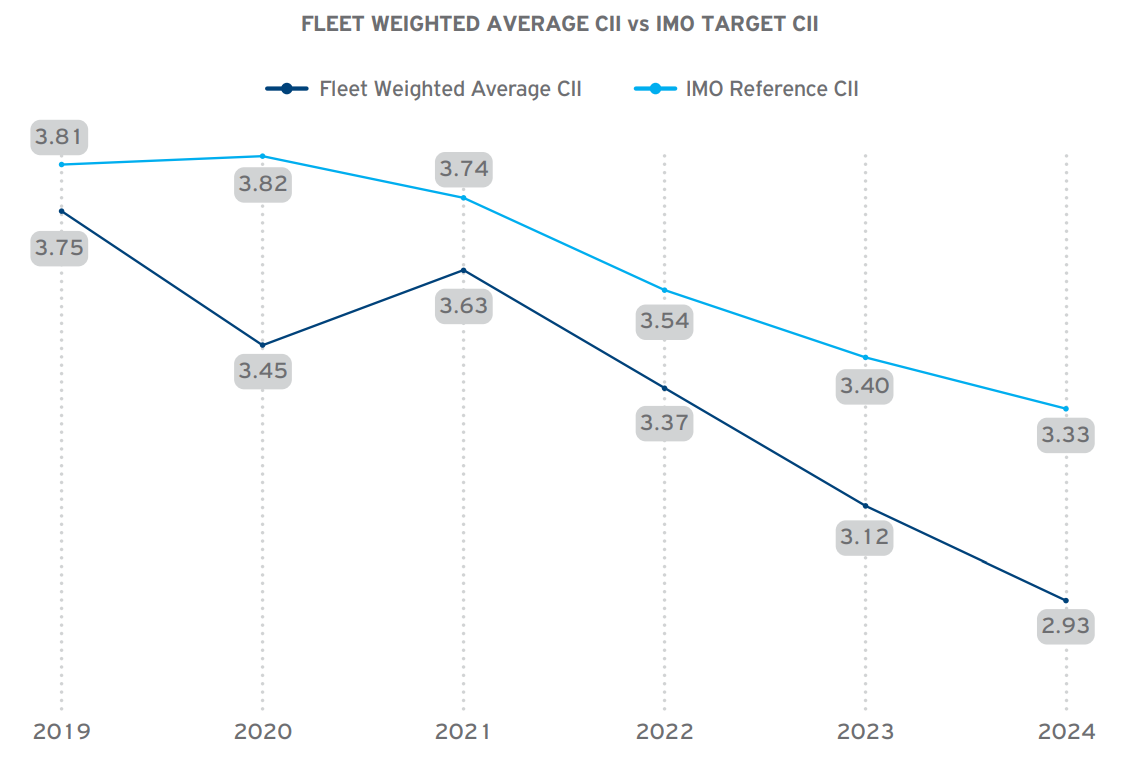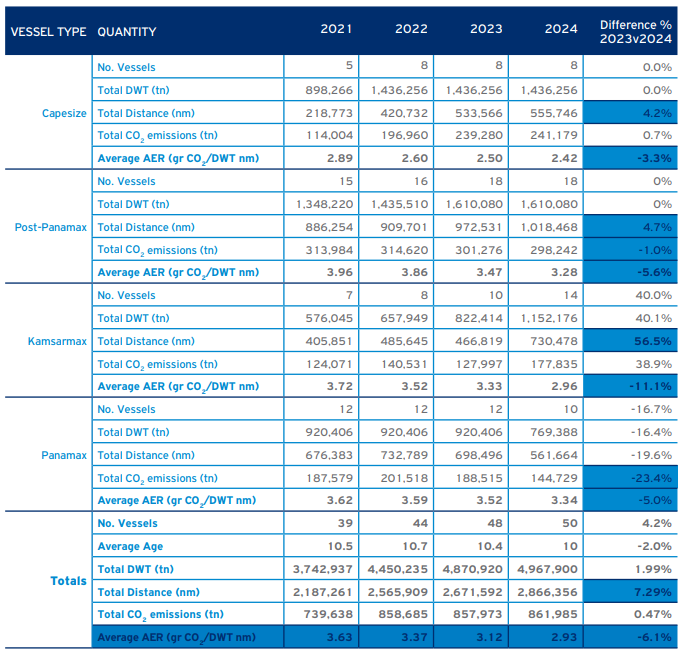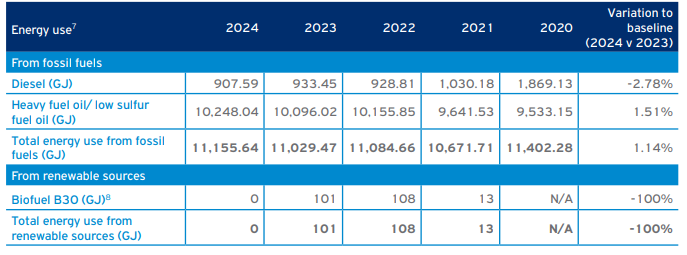Emissions Profile
Evolution of AER per vessel size and fleet
Safe Bulkers has made progress in improving its emissions profile, achieving a -6.09% reduction in AER.

Safe Bulkers average annual CII is maintained below the IMO required average CII for the 6th consecutive year since the IMO Data Collecting System came to force in 2019. We aim to set the standard for compliance with forthcoming international regulations and surpass the required AER levels.
Fleet emission profile per vessel type
IMO Carbon Intensity Indicators (CII) are related to a large extent to the size of the vessel, thus a larger vessel has inherently lower CII.
As a result, further analysis per vessel type is required in order to isolate and assess the actual improvements or variations of CO2 emissions from year to year.

Emission and Energy in numbers
Scope 1 emissions of our Company and energy use per fuel type is shown in the tables below:


Compliance with EU MRV & IMO DCS
We have achieved full compliance with the IMO DCS and the EU MRV regulations. We monitor our consumption emission footprint through a standardized, strict and structured process to ensure consistency and accuracy in our reporting. In addition, our vessels sailing from and to EU ports are subject to third-party verification by an accredited verifier.
- Web Design & Development by Generation Y

